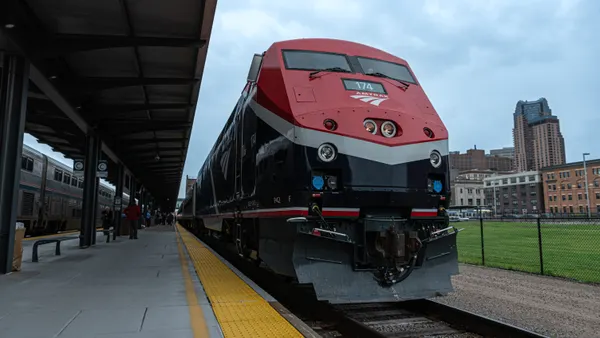Dive Brief:
- Motor vehicle fatalities in 2020 reached their highest point since 2007 in the United States, according to preliminary data released by the National Safety Council (NSC) last week, leading road safety advocates to call for action to prevent deaths.
- NSC said fatalities spiked 8% in 2020 to 42,060, even as vehicle miles driven dropped 13% due to the coronavirus pandemic. And the estimated death rate from crashes rose 24% from 2019, the highest year-on-year increase NSC has calculated since 1924. NSC said that figure shows people are driving faster and involved in more deadly crashes.
- In response, NSC and a slew of other organizations called for the federal government to redouble its efforts to reduce roadway deaths. NSC urged President Joe Biden and Transportation Secretary Pete Buttigieg to commit to zero fatalities on the nation's roads by 2050, while other groups like the Intelligent Transportation Society of America (ITS America) and Advocates for Highway and Auto Safety (Advocates) called on leaders to embrace technology to help reduce deaths.
Dive Insight:
The striking increase in fatalities come as the U.S. has seen a significant downturn in people driving due to the pandemic and its resulting remote work for millions of people. And while the reduction in vehicle miles traveled resulted in reduced emissions and cleaner air, those who are still driving have increased their speeds in less congested cities, according to transportation analytics company INRIX.
The higher speeds have sometimes resulted in dramatic pileups on highways and city streets, with inclement weather also being a factor. NSC President Lorraine Martin said it's "tragic" that while cars were taken off the roads, the country "didn't reap any safety benefits."
"These data expose our lack of an effective roadway safety culture," Martin said in a statement. "It is past time to address roadway safety holistically and effectively."
The state-level data left road safety officials troubled too. Only nine states saw a drop in deaths: Alaska (-3%), Delaware (-11%), Hawaii (-20%), Idaho (-7%), Maine (-1%), Nebraska (-9%), New Mexico (-4%), North Dakota (-1%) and Wyoming (-13%).
Meanwhile, seven states and the District of Columbia experienced a more than 15% increase in the estimated number of deaths last year: Arkansas (+26%), Connecticut (+22%), District of Columbia (+33%), Georgia (+18%), Mississippi (+19%), Rhode Island (+26%), South Dakota (+33%) and Vermont (+32%).
To help get speeds under control, the Governors Highway Safety Association (GHSA), the Insurance Institute for Highway Safety (IIHS) and the National Road Safety Foundation (NRSF) announced last week they would give Maryland and Virginia $100,000 each to develop speed management pilot programs that bring together engineering, equitable enforcement, education, public outreach and advocacy strategies.
Others called for technology to play a bigger role with new cars to help reduce the risk of deaths. ITS America President and CEO Shailen Bhatt repeated the organization’s call for vehicle to everything (V2X) communication technology, saying it can help mitigate or prevent up to 80% of non-impaired crashes. "We are on the cusp of wide-scale deployment of these life-saving technologies — without it, we will only make incremental improvements," Bhatt said in a statement.
Advocates President Cathy Chase called on the U.S. Department of Transportation (USDOT) to require automakers to include advanced driver assistance systems (ADAS) like automatic emergency braking as standard equipment, rather than "upcharging for them in luxury packages coupled with non-safety features."
"According to this new NSC report with every passing hour, approximately five people are being killed in preventable crashes," Chase said in a statement. "It is time for our federal and state officials to step up and stop this unconscionable death toll."













